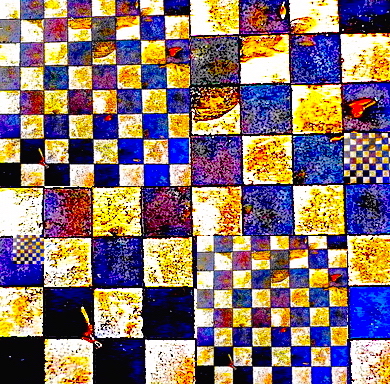Search
Recent comments
- laughable....
1 hour 1 min ago - odessa....
1 hour 11 min ago - embarrassing....
1 hour 20 min ago - no hush!....
1 hour 44 min ago - genocide futbol....
1 hour 54 min ago - freedom....
3 hours 27 min ago - I love lucy?....
4 hours 19 min ago - self-sanctioning....
4 hours 22 min ago - joe loses it....
4 hours 35 min ago - pandora's jar....
9 hours 52 min ago
Democracy Links
Member's Off-site Blogs
cold noughts and ones — and quantum in-betweeners...
 comp...Researchers in Australia have developed a new kind of cryogenic quantum computer chip which operates at close to the theoretical coldest temperature in the universe and may spark a new technological revolution.
comp...Researchers in Australia have developed a new kind of cryogenic quantum computer chip which operates at close to the theoretical coldest temperature in the universe and may spark a new technological revolution.The system, called Gooseberry, runs at a temperature 40 times colder than deep space – a 20-fold increase over what's possible with quantum computers today.
Immensely complex mathematical equations that would take traditional supercomputers hundreds if not thousands of years to calculate can take a quantum computer a matter of seconds to finish.
“This is going to be transformational in the next few years,” said Andrew White, the director of the ARC Centre of Excellence for Engineered Quantum Systems.
Traditional computers operate by using “bits” of information. A bit by its very nature is binary, on or off, black or white, yes or no. Its equivalent in quantum computing is a qubit, which leverages the weird, wishy-washy world of quantum mechanics to inhabit a “superposition” of two separate states simultaneously, thus greatly multiplying computational power.
Most contemporary quantum computers operate using a few dozen qubits. But these new cryogenic chips would allow for machines to perform calculations with thousands if not millions of qubits or more, achieving hitherto unimaginable levels of processing power.
Qubits require extremely low temperatures to function efficiently and the electrical wiring used to connect them has often disrupted operations by overheating. The Gooseberry system uses a vastly pared-down two-wire system to connect it to a secondary core in a separate compartment.
The system can do this because it operates at “millikelvin” temperatures, which are fractionally above absolute zero at 0.1 kelvin, or -459.49 degrees Fahrenheit (273.05 degrees Celsius). Absolute zero itself is -273.15 degrees Celsius.
Read more:
https://www.rt.com/news/514365-scientists-create-cryogenic-computer-chip/
- By Gus Leonisky at 8 Feb 2021 - 9:18am
- Gus Leonisky's blog
- Login or register to post comments
Does that mean we can eat it?... blah...
Currently I am just outside of Zurich, and the big news out of Switzerland at the moment is of course about two significant discoveries. One is the discovery of polonium traces on the late Yasser Arafat’s clothes in Lausanne (an Al Jazeera scoop), the second is the discovery (on the sigma-5 scale of scientific certainty) of the Higgs boson particle at CERN. Here’s a cartoon that eschews the scientific excitement and brouhaha about the seeming confirmation of the particle (and here is a more upbeat view about the implications for life as we know it).
Read more:
http://peoplesgeography.com/2012/07/06/wry-swiss-cartoon-on-higgs-boson-god-particle/
Radio commentary: The discovery of this particle will change the world.
Female: Does that mean we can eat it?
Source: front page of Tages Anzeiger, The Independent Swiss Daily (5 July 2012)
Please note that this "Does that mean we can eat it?" has been a common theme by some cartoonists when they were being asked to be stupid by their masters... See: http://www.yourdemocracy.net.au/drupal/node/31157
Illustration at top by Gus Leonisky: Der Schmetterlingseffekt auf einem Schachbrett (The Buttlerfly Effect on a Chessboard)